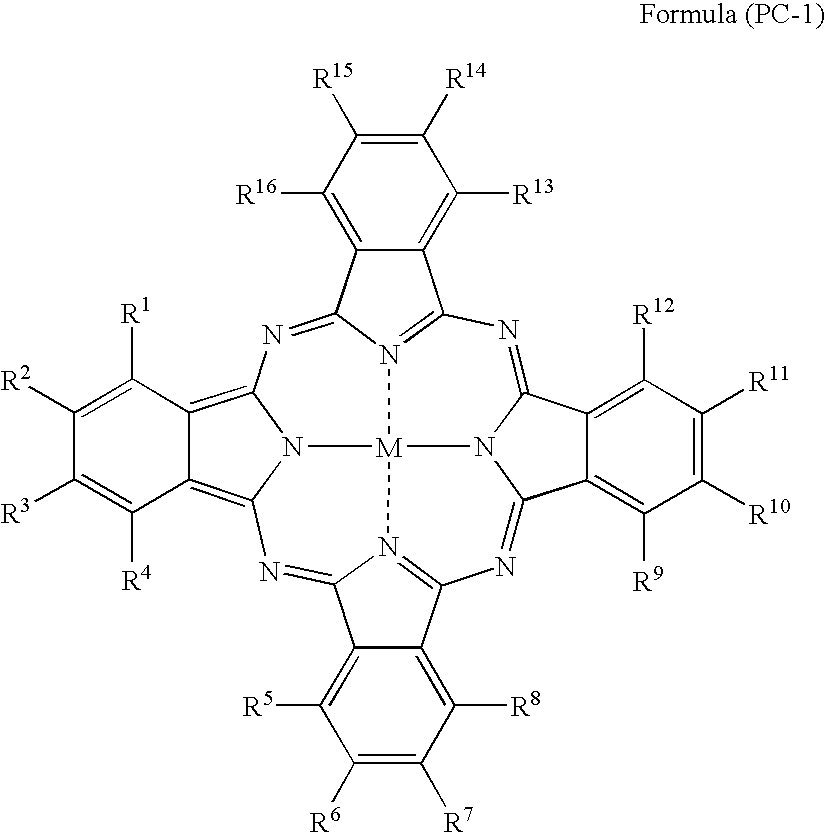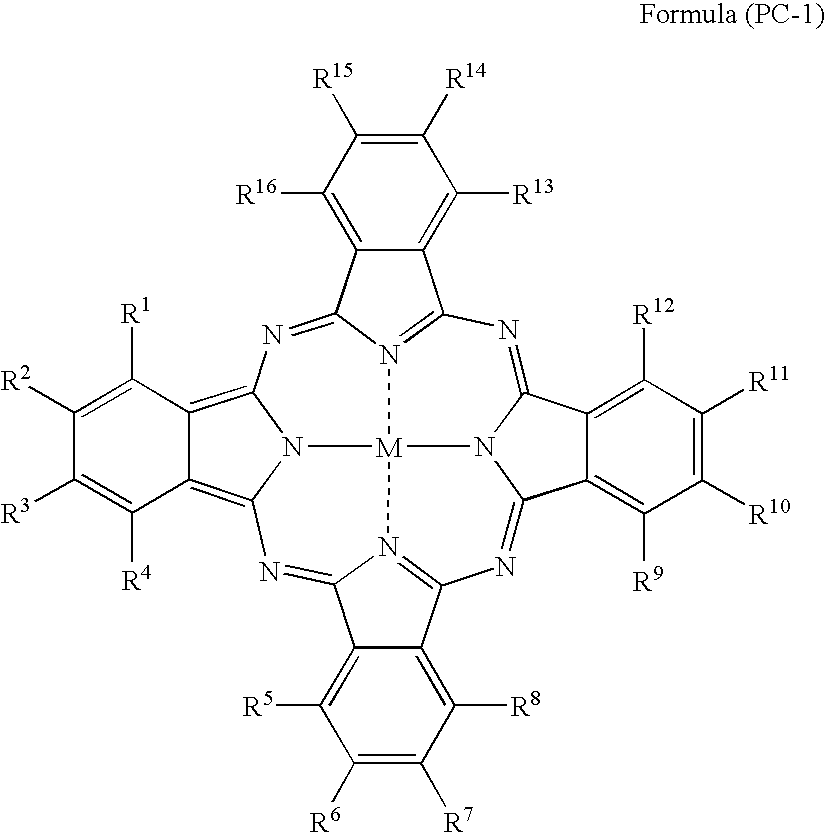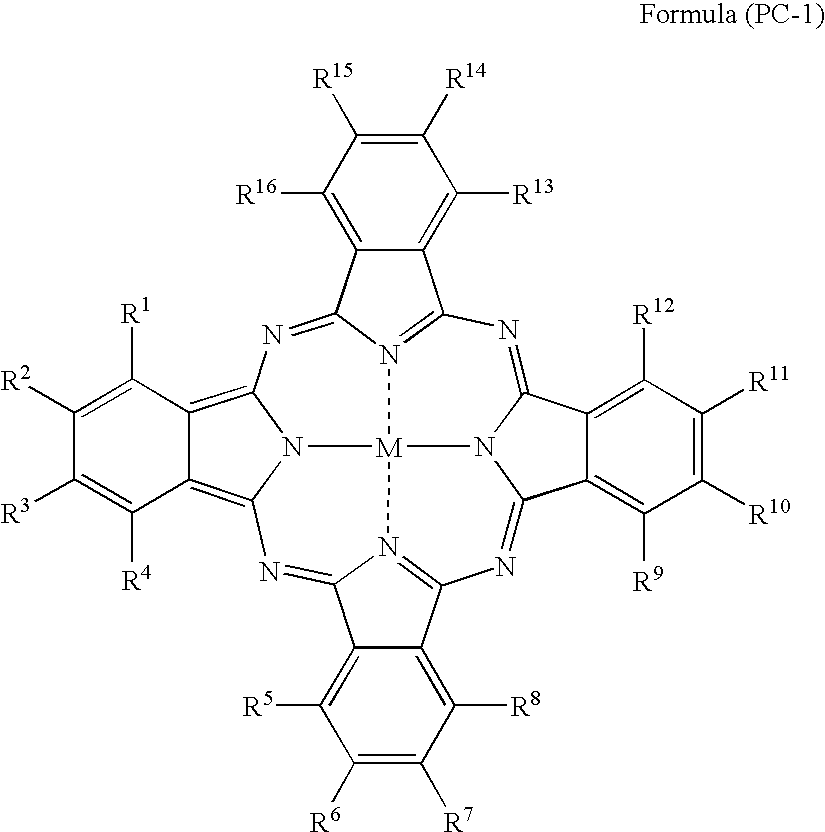Silver halide photosensitive material and photothermographic material
a technology of silver halide and photosensitive materials, applied in the direction of photosensitive materials, photosensitive materials auxiliaries/base layers, instruments, etc., can solve the problems of difficult to remove residual dyes from the photosensitive materials, problems to be solved, and not satisfactory as output systems for medical images
- Summary
- Abstract
- Description
- Claims
- Application Information
AI Technical Summary
Benefits of technology
Problems solved by technology
Method used
Image
Examples
example 1
[0471] (Preparation of PET Support)
[0472] (1) Film Manufacturing
[0473] PET having IV (intrinsic viscosity) of 0.66 (measured in phenol / tetrachloroethane=6 / 4 (weight ratio) at 25° C.) was obtained according to a conventional manner using terephthalic acid and ethylene glycol. The product was pelletized, dried at 130° C. for 4 hours, melted at 300° C. Thereafter, the mixture was extruded from a T-die and rapidly cooled to form a non-tentered film.
[0474] The film was stretched along the longitudinal direction by 3.3 times using rollers of different peripheral speeds, and then stretched along the transverse direction by 4.5 times using a tenter machine. The temperatures used for these operations were 110° C. and 130° C., respectively. Then, the film was subjected to thermal fixation at 240° C. for 20 seconds, and relaxed by 4% along the transverse direction at the same temperature. Thereafter, the chucking part was slit off, and both edges of the film were knurled. Then the film was ...
example 2
[0592] 1) Preparations of Coated Sample
[0593] Preparations of sample-201 to -211 were conducted in a similar manner to the process in the preparation of sample-102 in Example 1, except that changing the phthalocyanine compound in the back layer and in the intermediate layer to the compound shown in Table 2.
[0594] 2) Evaluation of Photographic Properties
[0595] Evaluation was done similar to Example 1, and the obtained results are shown in Table 2.
TABLE 2IntermediateLayerCompoundBack LayerofCompound ofCoatingFormulaCoatingPhotographic PropertiesSampleFormulaAmount(PC-1)AmountAbsAbsDensityResidualNo.(PC-1) No.(mg / m2)No.(mg / m2)610660RatioFogSensitivitySharpnessColorNote2012302150.090.300.300.17100944Invention2022502150.110.340.320.18101944Invention2032602150.130.360.360.19100953Invention2042402100.100.330.300.17101944Invention2052402200.110.340.320.17100944Invention206774077150.120.330.360.17100934Invention207924092150.110.340.320.18101934Invention20810740107150.110.330.330.1810294...
example 3
[0597]>
[0598] 1) Preparations of Sample-301 to 306
[0599] Preparations of sample-301 to -306 were conducted in a similar manner to the process in the preparation of sample-102 in Example 1, except that removing the piment-1 dispersion from the coating solution for image forming layer and, instead of this, adding the phthalocyanine compound of the invention (5% by weight aqueous solution) as shown in Table 3.
[0600] 2) Evaluation of Photographic Properties
[0601] Evaluation was done similar to Example 1, and the obtained results are shown in Table 3.
TABLE 3Image Forming LayerCoatingPhotographic PropertiesSampleAmountDensityResidualNo.Dye No.(mg / m2)Abs 610Abs 660RatioFogSensitivitySharpnessColorNote102Pigment-1360.220.250.880.17100934Invention3012250.120.270.440.16100955Invention30228250.110.280.390.16101945Invention30377250.120.300.400.16102945Invention30492250.130.270.480.16100945Invention305107250.140.260.540.16101945Invention30611250.120.300.400.16101945Invention
[0602] The photo...
PUM
| Property | Measurement | Unit |
|---|---|---|
| temperature | aaaaa | aaaaa |
| optical density | aaaaa | aaaaa |
| equivalent spherical diameter | aaaaa | aaaaa |
Abstract
Description
Claims
Application Information
 Login to View More
Login to View More - R&D
- Intellectual Property
- Life Sciences
- Materials
- Tech Scout
- Unparalleled Data Quality
- Higher Quality Content
- 60% Fewer Hallucinations
Browse by: Latest US Patents, China's latest patents, Technical Efficacy Thesaurus, Application Domain, Technology Topic, Popular Technical Reports.
© 2025 PatSnap. All rights reserved.Legal|Privacy policy|Modern Slavery Act Transparency Statement|Sitemap|About US| Contact US: help@patsnap.com



